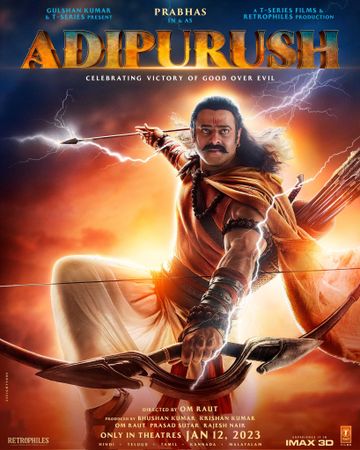“Adipurush,” directed by Om Raut, is a big-budget retelling of the Hindu epic Ramayana. However, despite its visual spectacle, the film fails to capture the depth and complexity that make epics resonate with audiences. Raut’s approach turns the epic into an action-adventure, catering to the video game-crazy audience, but it lacks emotional depth.
The film begins with Raghava, accompanied by his wife Janaki and brother Shesha, in the forest during their 14-year exile. The events unfold quickly without delving into the moral dilemmas and interpretations present in Valmiki’s text. While the action sequences, such as Jatayu’s chase, are engaging, the lack of emotional weight leaves much to be desired.
Raut, along with co-writer Manoj Muntashir, takes creative liberties only with the characters representing evil, while the depiction of the protagonist remains predictable. The film presents a clear battle between virtue and vice but fails to explore the space between right and wrong, resulting in a stiff narrative.
Comparatively, Ramanand Sagar’s “Ramayan” series still holds more emotional and intellectual interest due to its nuanced storytelling. The characters in “Adipurush” lack depth, with minimal room for shades of gray. Some performances, like Prabhas as Raghava, are physically convincing but fail to convey the inner turmoil required for the character. Saif Ali Khan’s portrayal of Lankesh/Raavana becomes caricature-like, lacking the complexity needed to understand his personality.
The film’s combination of live-action and motion capture is a commendable achievement for Indian entertainment, but it fails to enhance the storytelling effectively. The chase scenes, specifically, appear fake, even within the context of mythical characters.
Female characters receive limited development and impact. Kriti Sanon’s portrayal of Janaki is graceful but lacks substantial involvement in the conflict between the two male leads. Sonal Chauhan’s character, Mandodari, is also sidelined after minimal dialogue.
Raut’s technical brilliance, previously seen in “Tanhaji: The Unsung Warrior,” is partially evident in capturing the dark aspects of Lankesh. However, his overall imagination feels derivative, drawing inspiration from other fictional works such as Gotham City, The Lord of the Rings, and Planet of the Apes. The music by Ajay Atul raises hopes but gets overshadowed by the film’s rush to focus on action.
Ultimately, “Adipurush” falls short of delivering a compelling retelling of the Ramayana. The film lacks the nuanced exploration of human nature and the thin line between good and evil that make epics timeless. It fails to resonate with the audience due to its lack of emotional depth and reliance on superficial visuals.
